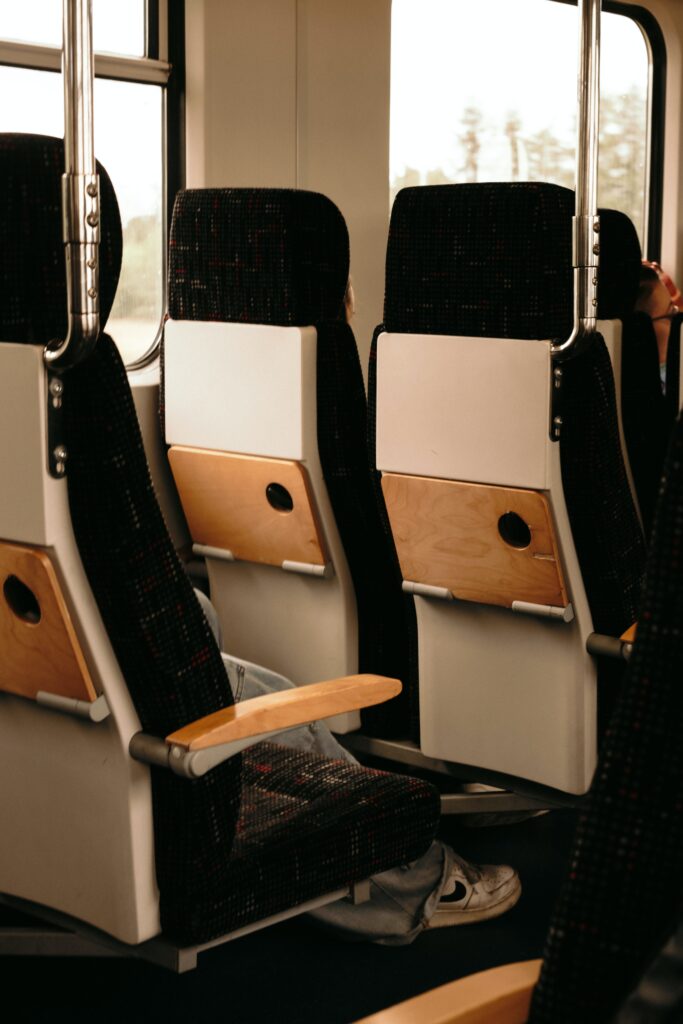One of the pivotal factors that potential buyers and operators consider is the mileage of this vehicle. Mileage, often referred to as fuel efficiency, directly impacts operational costs and environmental concerns. In this study, we delve into the Mileage of the top 20 seater tempo travelers and various aspects that influence the mileage of the 20-seater KW Tempo Traveller.
Table of Contents
Mileage of 20-Seater Tempo Traveler
| Model | Seating Capacity | Mileage | Price | Fuel Tank Capacity |
|---|---|---|---|---|
| Force Traveller 4020 Super | 20+ Driver | 9-12 KMPL. (ARAI Mileage Certified 17 kmpl.) | Rs 18.63 lakh (Ex-Showroom) | Diesel: 70 Litres, DEF: 23 Litres |
| Tata Starbus LP 410/33 | 20+ Driver | 8-10 KMPL | From ₹ 18.78 Lakh (Ex-Showroom) | Diesel: 60 Litres |
| Mahindra CRUZIO BS6 STAFF MAXI COACH | 20+ Driver | 8-9 KMPL | From ₹ 18.18 Lakh (Ex-Showroom) | Diesel: 60 Litres |
| Ashok Leyland MiTR Staff Bus 19+D | 19+ Driver | 7.5-9.5 KMPL | ₹ 25.25 Lakh (Ex-Showroom) | Diesel: 90 Litres |
The mileage of 20-seater tempo travelers varies depending on the specific model and brand. From the aforementioned models, we can see that mileage ranges from as low as 7.5 KMPL in the case of the Ashok Leyland MiTR Staff Bus to as high as 12 KMPL for the Force Traveller 4020 Super. These are what users have claimed the actual mileage to be. For Force Traveller 4020 Super ‘Certified ARAI Mileage’ is 17 kmpl as against the 9-12 kmpl that users actually get.
However, it’s essential to understand that these figures offer only a rough prediction. Actual mileage can significantly differ based on several factors. The way the vehicle is driven plays a crucial role; aggressive driving or frequent braking can reduce mileage, while a smoother driving style can increase it. Additionally, the terrain and road conditions, whether it’s city streets or highways, the weight the vehicle is carrying, and even the weather conditions can all impact the real-world mileage. So, while manufacturers’ figures provide a guideline, the actual mileage will always depend on a mix of these factors.
Factors Affecting Mileage
- Engine Type and Performance: The engine is the heart of any vehicle, impacting its power, torque, and fuel efficiency. The KW Tempo Traveller comes with various engine options, typically diesel variants. Modern engines employ technologies like common rail direct injection (CRDI) and variable geometry turbochargers (VGT) to enhance fuel combustion and efficiency.
- Vehicle Load: The number of passengers and cargo the vehicle carries affects its mileage. Overloading can strain the engine and result in lower fuel efficiency. The 20-seater configuration allows for a substantial passenger count, but exceeding the recommended load capacity can lead to increased fuel consumption.
- Driving Conditions: Driving conditions, such as urban traffic congestion, highway cruising, and hilly terrain, influence mileage. Frequent stops and starts in urban areas consume more fuel due to acceleration and deceleration, while highway driving generally offers better mileage due to consistent speeds.
- Driver Behavior: Driver habits like aggressive acceleration, sudden braking, and excessive idling can significantly impact mileage. Proper training of drivers in fuel-efficient driving techniques can lead to better fuel economy.
- Aerodynamics: The design of the vehicle plays a role in its aerodynamics. Vehicles with better aerodynamic features experience less air resistance and thus require less energy to maintain speed, leading to improved fuel efficiency.
- Tire Pressure: Under-inflated tires can increase rolling resistance, resulting in higher fuel consumption. Regularly maintaining optimal tire pressure can positively influence mileage.
- Maintenance: Well-maintained vehicles operate more efficiently. Regular servicing, including air filter cleaning, oil changes, and fuel injector maintenance, can contribute to better mileage.
- Fuel Quality: The quality of fuel used also affects mileage. High-quality diesel with lower sulfur content and fewer impurities can lead to cleaner combustion and better fuel efficiency.
Fact Answering Questions
1: How can I improve the mileage of my 20-seater KW Tempo Traveller?
Improving mileage involves a combination of factors. First, ensure you’re not overloading the vehicle beyond its recommended capacity, as this can strain the engine and decrease fuel efficiency. Additionally, promote fuel-efficient driving habits among your drivers, such as avoiding aggressive acceleration and braking. Regular maintenance, including tire pressure checks and engine servicing, is crucial. Lastly, using high-quality diesel fuel with lower sulfur content can enhance combustion efficiency and improve mileage.
2: Does driving in hilly terrain significantly affect mileage in a 20-seater KW Tempo Traveller?
Yes, driving in hilly terrain can impact mileage negatively. Uphill climbs require more engine power and fuel, while downhill descents may involve engine braking, which consumes fuel as well. To mitigate this, maintain a steady speed when ascending and use engine compression for braking when descending. Plan routes carefully to minimize unnecessary climbs and descents.
3: Are there any technological advancements on the horizon that could further enhance the mileage of the KW Tempo Traveller?
As technology evolves, there is potential for future iterations of the KW Tempo Traveller to offer improved mileage figures. Advancements in engine efficiency, hybrid or electric powertrains, and lightweight materials in vehicle design can contribute to better fuel efficiency. Keep an eye on updates from the manufacturer for any announcements regarding enhanced mileage features in newer models.
Conclusion
The mileage of the 20-seater KW Tempo Traveller is influenced by a multitude of factors, ranging from engine technology to driving behavior. It is evident that adopting a holistic approach to mileage optimization is crucial for fleet operators and individual owners. Through careful load management, conscientious driving practices, and routine maintenance, the mileage of the 20-seater KW Tempo Traveller can be optimized, resulting in reduced operational costs and a smaller environmental footprint. As technology continues to evolve, future iterations of the vehicle might offer even better mileage figures through advancements in engine efficiency and vehicle design.
